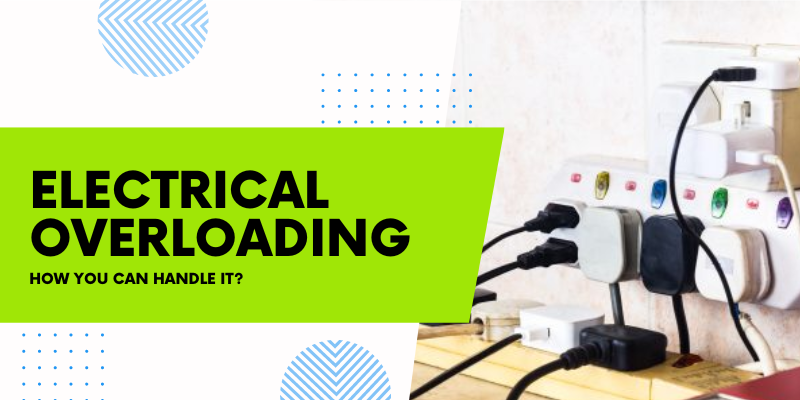Did you ever experience a circuit overloading situation? If you plug in too many devices at the outlet, everything works smoothly until your electric power goes for a toss out of the blue. It happened due to circuit overload. In this blog, we’ll explain circuit overload, how it happens and how to handle it.
Fundamentals of Electrical Circuit
Circuits include fuse, wiring, and connected devices, such as electrical appliances and light fixtures. Each circuit uses electrical power, which adds to the circuit’s total load. When the circuit wiring’s rated load exceeds, the circuit breaker will trip and shut the power to the whole circuit.
Circuit Overload
All electrical circuits are made to handle a fixed amount of electricity. A circuit overload will happen if you pull more electricity than a circuit can handle. Circuit breaker trips to aid in interrupting the circuit and flow of the current. The excess load would cause the circuit wiring to heat up without breakers. It could melt the wire insulation or even cause a significant fire breakout. Different circuits have different load ratings so some circuits can render more electric energy than others. Home electrical systems are made explicitly for household usage, but we may sometimes insert too many devices on the same circuit by mistake. Nevertheless, if you’re aware of your home’s circuit layout, you can manage and avert overloads quickly.
Watch Out For Circuit Overload Signs!
Each circuit has a different load rating and may get overloaded on different occasions. The most apparent sign of circuit overload is the tripping of the circuit and closing off all the electric power.
Look Out for The Following Signs As Well:
- Burning smell coming out of the outlets or switches.
- Outlets get warm that you can feel upon touch.
- Appliances may get less power than required.
- Dimming lights.
- Noisy switches or outlets.
Despite taking steps to avert circuit overloads, you should call an emergency electrician in Sydney if these problems aren’t solved.
3 Practical Solutions for Handling Circuit Overload Issue:
- Avoid using all the electrical appliances at once.
- Use an extension cord sometimes.
- Upgrade your electrical conduits and electrical system.
After taking all preventative measures, if you still experience short circuits or circuit overload, call an electrician.
Final Words
The root causes behind the overloaded circuit might be old, dated systems or multiple appliances simultaneously using high amounts of electricity. You can avert the overloading of circuits by using dedicated circuits, installing an appropriate circuit breaker and performing electrical safety inspections at regular intervals.
Electrical overloading happens when too much electric power is pulled from the circuit. The electrical circuit overload can cause severe issues and must be solved promptly by a licensed electrician. Contact IZCO Electrical on 0470 123 811, as we have an emergency electrician team ready to help people in Sydney when an electrical overloading emergency unfolds.





